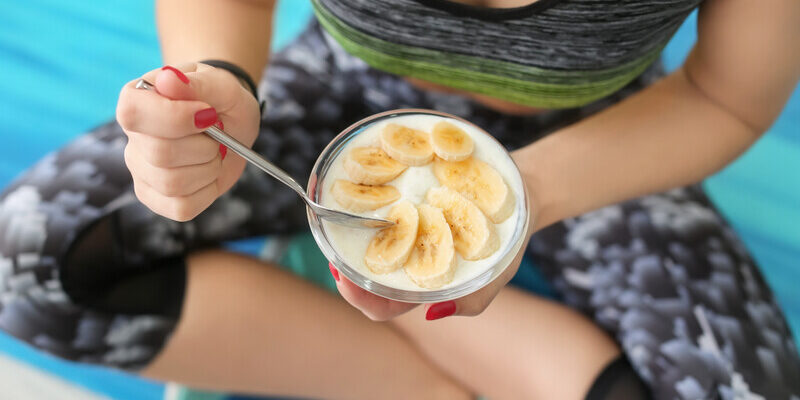By Barbara Broggelwirth, MS, RDN, CDN
Did you know that certain foods when paired together actually enhance their nutrient uptake? Nutrition experts call this food synergy. It is a concept of understanding the interaction between nutrients, their absorption, and bioavailability in the human body.
Bioavailability is how well your body absorbs and uses a nutrient when it enters the body. Plant foods are rich in micronutrients (vitamins, minerals, and antioxidants), and understanding the bioavailability of nutrients can help us to gain the most from our consumption. When we consume a food or drink, certain nutrients are absorbed into the bloodstream and transported to their respective target tissues. The nutrient supply in the human body depends mainly on the bioavailability of the nutrient rather than the quantity consumed.
Studies confirm that these foods and their active compounds play a vital role in preventing chronic diseases, improving immunity, and preventing infections. Studies confirm that they can prevent coronary artery disease, stroke, diabetes, and many cancers. By now, you might be curious to know what these foods are. Let’s explore.
Green Tea/Matcha and Lemon Juice – Green tea contains the bioactive epigallocatechin gallate (EGCG), praised for antioxidant benefits, including heart health and cancer prevention. Citrus juice enhances absorption of EGCG ten times more compared to when drunk alone. A study from Purdue University has shown that adding lemon juice to green tea enhances beneficial antioxidants’ availability.
Turmeric, Black Pepper, Olive Oil and Heat – Turmeric contains a powerful antioxidant, curcumin, which helps fight inflammation. But it is not easily absorbed in the body. Piperin, a phytonutrient in pepper, and the fat in olive oil both act to enhance curcumin absorption. Roasting turmeric also increases bioavailability. Turmeric can be added as a layering spice to soups and stews and go undetected.
Carrots and Olive Oil – The fat in olive oil helps with the absorption of vitamin A in carrots.
A bonus – the bioactives in carrots (lutein, beta-carotene, falcarinol and more) remain active with cooking.
Spinach and Lemon Juice – Vitamin C boosts the iron we can get from food. The iron in plants such as spinach is blocked from absorption by naturally occurring compounds. Vitamin C helps change the situation so that more of the plant-based iron (non-heme) is absorbed. A generous squeeze of lemon juice or a serving of broccoli or other vitamin C-rich food will do the trick. This is especially helpful for vegetarians because the body does not absorb plant-based iron as readily as it does the iron found in meats, known as heme iron.
Olive Oil and Tomato – While all tomatoes have a good amount of lycopene, cooking them increases bioavailability, and olive oil increases absorption. Lycopene is a powerful antioxidant with benefits to the skin, heart health and cancer prevention.
Raspberries and Chocolate – Raspberries and chocolates show a better synergistic effect for their antioxidant capacity. The addition of dark chocolate did not increase the bioavailability of the antioxidants in the raspberries. However, there is a significant increase in the antioxidant capacity of dark chocolates with raspberry compared to plain dark chocolates.
Turmeric (curcumin) and Ginger – A combination of curcumin and ginger extract might provide a novel approach to improving structure and function in skin and reduce formation of nonhealing wounds in “at-risk” skin. The combination of curcumin and ginger together, topically applied to skin, enhances the production of collagen.
Garlic and Honey – Garlic and honey have a good synergistic effect; when garlic reaches the stomach, it promotes the production of gastric juices that are essential for absorption of iron and enrich the bloodstream. You may consider trying honey garlic chicken breasts as a dinner idea.
Yogurt and Banana – Yogurt and banana play a significant role in mutual benefits of probiotic (yogurt) and prebiotic (banana). Probiotics introduce good bacteria into the gut, whereas prebiotics act as a fertilizer for the good bacteria. So, consumption of probiotics along with prebiotics is good for the gut bacteria which improves gastrointestinal digestion.
Food synergy can also help mitigate some of the harmful effects of grilled meat. Charred meat poses possible health risks; it may be carcinogenic. The combination of meat and intense heat produces heterocyclic amines (HCAs) and polycyclic aromatic hydrocarbons (PAHs). These chemicals form when proteins and sugars react with high heat. HCAs are found in the burned, crispy outer layer of the cooked meat, and PAH’s come from the smoke and fire caused by the fat dripping on the hot surface. Marinating meat for at least 1 hour prior to grilling in a citrus marinade including lemon juice, garlic and onion will help to lower the formation of HCS’s and PHA’s. Also, using the herb rosemary can help due to its abundance of antioxidants.
Of course, the ultimate food synergy is a balanced plate. Research has repeatedly shown that our eating habits influence our health. The Mediterranean-type diet is an eating style that repeatedly does well in studies. It has a balance of healthy fats, colorful fresh and local vegetables and fruits, whole grains, and a combination of plant and animal proteins.
Sources:
- https://journalofethnicfoods.biomedcentral.com/articles/10.1186/s42779-019-0033
- https://www.salisbury.edu/administration/administration-and-finance-offices/dining-services/newsletter/may-1-2021/food-synergy.aspx
Barbara Broggelwirth, MS, RDN, CDN is a registered dietitian nutritionist who works with Bariatric and Medical Weight Management patients to help them achieve their health and weight loss goals.

